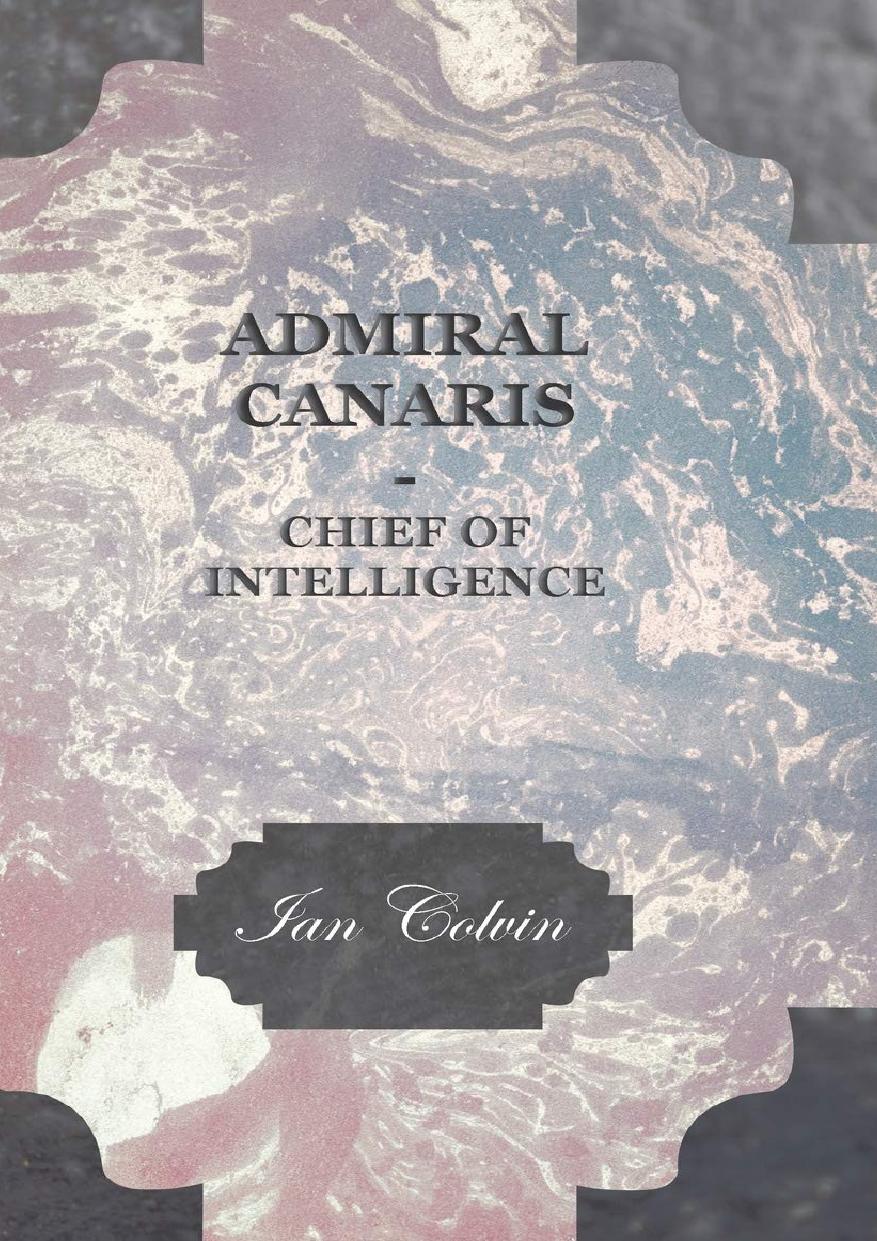Admiral Canaris - Chief of Intelligence by Ian Colvin

Author:Ian Colvin [Colvin, Ian]
Language: eng
Format: epub, pdf
Published: 0101-01-01T00:00:00+00:00
XIV THE HENDAYE TAPESTRY
On thewhite cliffs of Dover, the sands of El Alamein, and the banks of the Volga at Stalingrad there are monuments to three turning points of the Second World War, where the flood of Hitler's fire and steel was stemmed and turned back. But if our grandchildren ask why it was that Hitler stopped at the Pyrenees and how Spain remained neutral against all historical likelihood, there is no simple answer that we can give them. The fourth and most enigmatic turning point of the war is practically forgotten. The English bathers at St. Jean-de-Luz, the Americans at Biarritz, the Frenchmen lounging under the palm trees of Hendaye, where the white facade of the Spanish Consulate with its pretentious wrought-iron doors (nearly always shut) faces the Atlantic rollers, none of these gives a thought today to the memorable October 23rd, 1940, when the German Chief of State travelled along this coast to meet the Spanish Caudillo at the foot of the Pyrenees. No stone will be raised to mark what is dimly remembered as the Hendaye Conference.
When painters and weavers were historians, they often conveniently put several incidents of the same story on to one canvas or tapestry. The monarchs advanced on their steeds; the cloth of gold, the carcanets gleamed; the thickness of spears, heads, legs and spurs lent a thronged importance to their meeting. Another moment of time was caught in the background, the vanquished lying slaughtered in an olive grove or hurtling from a cliff, the traitor hanging incongruously from a gibbet.
Here, then, are the figures that fill the centre of my tapestry of Hendaye: the German conqueror in uniform with peaked cap, bulging eyes set snakelike on the small plump Caudillo; with them all their chivalry in grey and scarlet; the meeting place a railway coach, the Fuehrerâs own, at the end of the long railway from Paris and Bordeaux between the Pyrenees and the Atlantic.
Ribbentrop is with the Fuehrer in pseudo-military uniform, designed by himself; Marshal Keitel, Chief of the High Command; Marshal von Brauchitsch, Commander-in-Chief of the Army; Colonel-General Dollman and Lieutenant-General Bodenschatz. There is the tall figure of Dr. von Stohrer, German Ambassador in Madrid; Schmidt the interpreter; General Espinosa de los Monteros, the Spanish Ambassador in Berlin; and Ramon Serrano Suner, brother-in-law of the Cau-dillo, newly made Spanish Foreign Minister, attending his master with translators and secretaries, A.D.C.s and staff officers.
The German infantry band at Hendaye stationâit soon created a diplomatic incident by venturing into San Sebastianâ struck up military music as the two trains pulled in. The game for high stakes began in what the official United States documents describe as âHitlerâs Parlour Carâ. Will you walk into my parlour? . . .
In drawing up the frontiers of Vichy France, Hitler had left himself this coastal strip of holiday resorts, the Cote dâOr, connecting with Spain. He wanted to end the neutrality of Spain and make more use of her possessions in Africa, Spanish Morocco and Rio de Oro and the Spanish bases in the Canaries from which German submarines could attack British convoys.
Download
Admiral Canaris - Chief of Intelligence by Ian Colvin.epub
Admiral Canaris - Chief of Intelligence by Ian Colvin.pdf
This site does not store any files on its server. We only index and link to content provided by other sites. Please contact the content providers to delete copyright contents if any and email us, we'll remove relevant links or contents immediately.
Machine Learning at Scale with H2O by Gregory Keys | David Whiting(4183)
Never by Ken Follett(3793)
Harry Potter and the Goblet Of Fire by J.K. Rowling(3775)
Unfinished: A Memoir by Priyanka Chopra Jonas(3333)
Fairy Tale by Stephen King(3220)
The Man Who Died Twice by Richard Osman(2997)
Will by Will Smith(2793)
Rationality by Steven Pinker(2291)
The Dark Hours by Michael Connelly(2243)
Can't Hurt Me: Master Your Mind and Defy the Odds - Clean Edition by David Goggins(2228)
It Starts With Us (It Ends with Us #2) by Colleen Hoover(2198)
The Storyteller by Dave Grohl(2172)
The Dawn of Everything: A New History of Humanity by David Graeber & David Wengrow(2122)
Friends, Lovers, and the Big Terrible Thing by Matthew Perry(2119)
The Becoming by Nora Roberts(2088)
The Stranger in the Lifeboat by Mitch Albom(2050)
Cloud Cuckoo Land by Anthony Doerr(2035)
Einstein: His Life and Universe by Walter Isaacson(1967)
Love on the Brain by Ali Hazelwood(1965)
